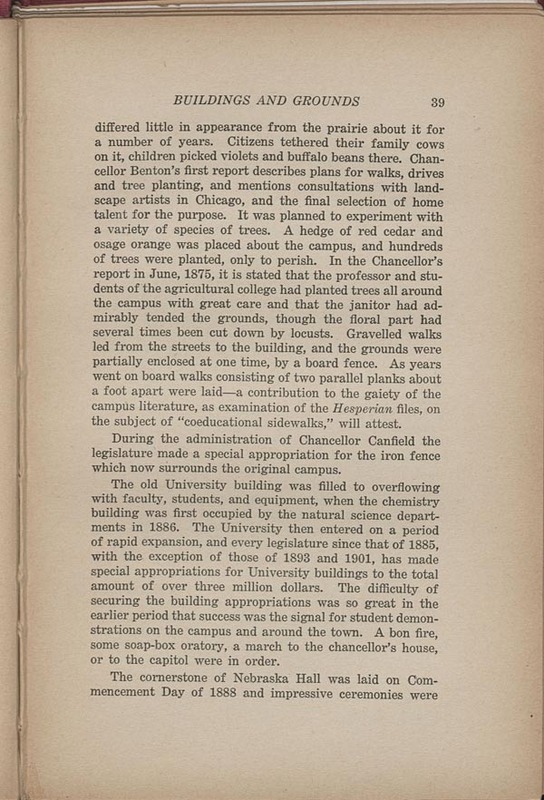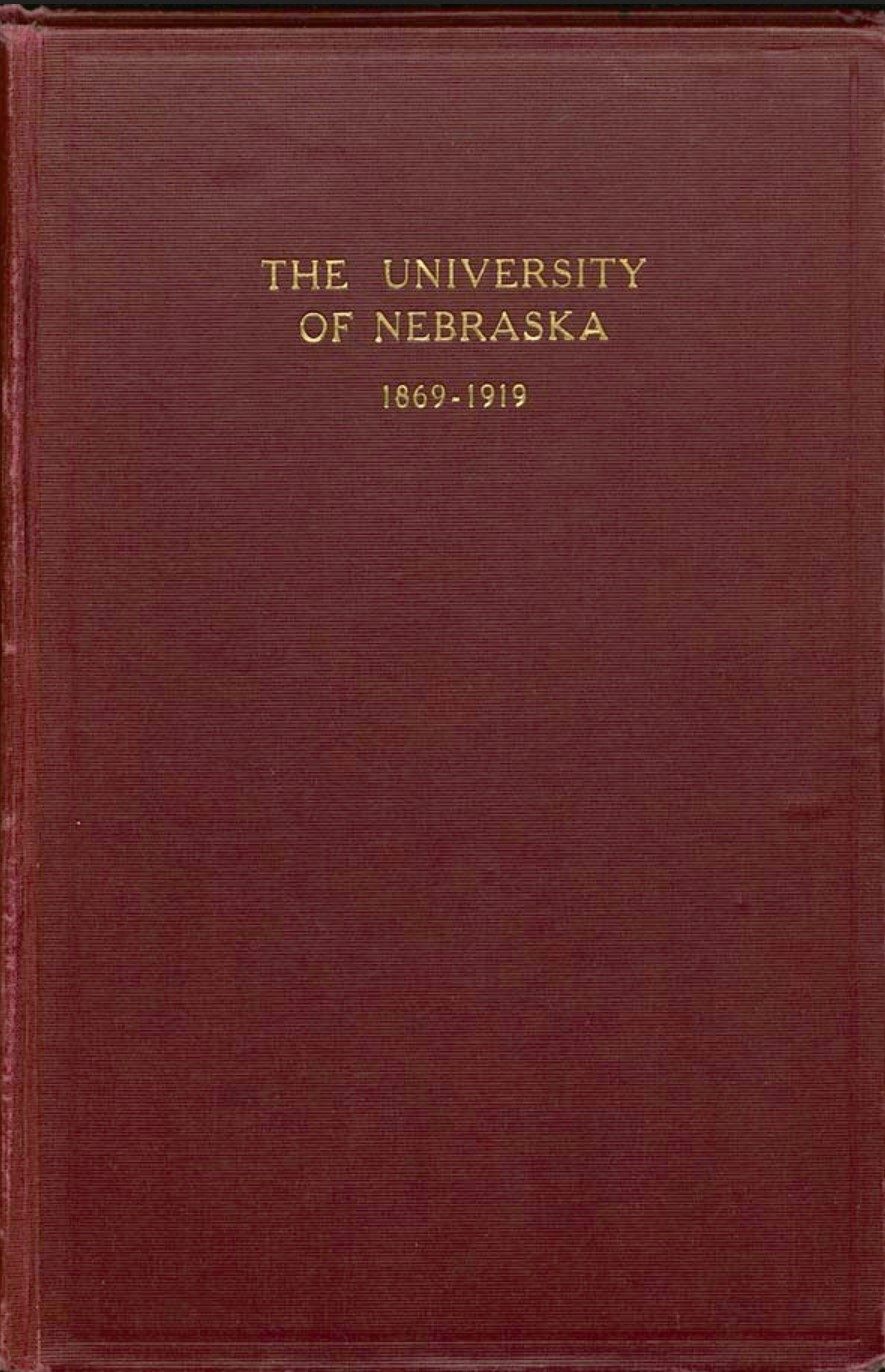043
Item
-
Title
-
043
-
Description
-
Semi-Centennial Anniversary Book: The University of Nebraska, 1869-1919
-
Transcription
-
differed little appearance from the prairie about it for a number of years. Citizens tethered their family cows on it, children picked violets and buffalo beans there. Chancellor Benton's first report describes plans for walks, drives and tree planting, and mentions consultations with landscape artists in Chicago, and the final selection of home talent for the purpose. It was planned to experiment with variety of species of trees. A hedge of red cedar and osage orange was placed about the campus, and hundreds of trees were planted, only to perish. In the Chancellor's report in June, 1875, it is stated that the professor and students of the agricultural college had planted trees all around the campus with great care and that the janitor had admirably tended the grounds, though the floral part had several times been cut down by locusts. Gravelled walks led from the streets to the building, and the grounds were partially enclosed at one time, by a board fence. As years went on board walks consisting of two parallel planks about a foot apart were laid—a contribution to the gaiety of the campus literature, as examination of the Hesperian files, on the subject of "coeducational sidewalks," will attest.
During the administration of Chancellor Canfield the legislature made a special appropriation for the iron fence which now surrounds the original campus.
The old University building was filled to overflowing with faculty, students, equipment, when the chemistry building was first occupied by the natural science departments in 1886. The University then entered on a period of rapid expansion, and every legislature since that of 1885, with the exception of those of 1893 and 1901, has made special appropriations for University buildings to the total amount of over three million dollars. The difficulty of securing the building appropriations was so great in the earlier period that success was the signal for student demonstrations on the campus and around the town. A bon fire, some soap-box oratory, a march to the chancellor's house, or to the capitol were in order.
The cornerstone of Nebraska Hall was laid on Commencement Day of 1888 and impressive ceremonies were
-
Rights
-
To inquire about usage, please contact Archives & Special Collections, University of Nebraska-Lincoln Libraries. These images are for educational use only. Not all images are available for publication.



